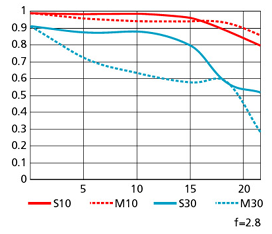If you have to carry only one lens, which lens would you choose? After purchasing a DSLR, it can be an overwhelming experience to select the right lens for the camera, specially if it is your first time purchase. There are so many camera brands to select from and they all have their own set of lenses. My first DSLR, Nikon D60, came with the kit lenses (18-55mm and 55-200mm) which removed my confusion on lens selection. Since then, I have owned two DX format DSLRs, two FX format DSLRs and various lenses from Nikon. Even though my first lenses were not my choice, it worked pretty well for me in all kinds of shooting scenarios. Later, when I upgraded my camera to D90, I bought it in a combo package which came with a 18-200mm lens along with other accessories including the memory card and the cleaning kit. Later, I sold all of my lenses and purchased a 18-300mm lens. All of these lenses are designed for different purposes and different shooting environments. Some of them are designed for all purpose shooting, some of them are for indoor shooting only and others are designed to reach long distance subjects. Some of the lenses are heavier and hard to carry around all day and some of them are light weight and made for traveling purposes. It’s hard to cover all of them in one blog post, but today, I am going to discuss one particular lens that might be an ideal for traveling purpose and specially if you want to carry only one lens that covers the variety of ranges.
When I purchased 18-300mm, I got AF-S DX Nikkor 18-300mm f/3.5-5.6 G ED VR lens which seems to be discontinued now and replaced by the newer model, AF-S DX Nikkor 18-300mm f/3.5-6.3 G ED VR, which I am going to discuss in today’s post. Let me briefly summarize the technical details and then we can go to the practical aspects of the lens.
Nikon AF-S DX 18-300mm f/3.5-6.3 G ED VR Lens
Technical Details
| Effective Focal Length (on FX Models) | 27 - 450mm |
| Min Focus Distance | 0.48m |
| Maximum Aperture | f/3.5 on 18mm and f/6.3 on 300mm |
| VR (Vibration Reduction) | Yes |
| AF-S (Silent Wave Motor) | Yes |
| Diaphragm | 7 |
| Mounting Plate | Metal and weather-sealed |
| Filter Size | 67mm |
| Approx. Weight | 550gm |
| Diameter x Length | 78.5mm x 99mm |
| Price | $699.95 (may vary) |
G - It means the lens’ aperture is electronically controlled and does not have an aperture ring on it. Some of the Nikkor lenses will have an aperture ring allowing physical, manual aperture control which is designed for the older bodies.
ED - ED stands for Extra-Low Dispersion Glass. It is basically a glass coating that doesn't disperse light as it enters the lens as other normal glass does and obtain optimum correction of chromatic aberrations.
If you want to learn more about the symbols that are printed on the lens barrel, please check out my blog - Alphabets printed on Nikon lenses and their meaning
The main advantage of this lens is you have to carry only one lens to cover the wide angle at 18mm and if you want to reach longer distance, you can zoom all the way to 300mm. And if you use this lens on FX format DSLR, your max effective focal length will be 450mm (300mm multiplied by 1.5 sensor crop factor) and can reach even farther distance. This superzoom lens saves your time by not having to switch between multiple lenses if you were carrying two lenses, let’s say 18-55mm and 55-200mm for example, to cover the shorter and the longer focal range. The only downside may be you have to carry around heavier lens attached to the camera all the time. Another great feature of this lens is AF-S system which utilizes the silent wave motor (SWM) technology that converts “traveling waves” into rotational energy to focus the optics. This technology enables high-speed auto-focusing which is extremely accurate and super quiet. This lens would be better balanced if used with Nikon D7XXX series cameras and the D500 but works equally well with the lower model DX cameras as well. The lens is well built which comes with the metal mounting and also designed to protect the internal parts of the lens from external influences such as moisture, dust, and humidity.
One thing I noticed on this lens is the loss of one-third aperture value (hence one third less light) at 300mm focal length than it’s predecessor, which means you have to increase the ISO sensitivity of the camera to be able to use a higher shutter speed at the maximum focal length. This is usually a problem if you are shooting a fast moving subject, flying bird for example, fully zoomed at 300mm and want to freeze the motion of the subject by using a faster shutter speed. But if your camera can use a higher ISO value without producing much noise, you can increase the ISO value and then increase the shutter speed to capture the fast moving subjects without a problem. The trade-off for the flexibility of this lens is probably the lower image quality compared to the lens which has a fixed focal length, also known as the prime lens. But if you look at the versatility of this lens and consider the price, it might be an ideal lens for the travelers.




